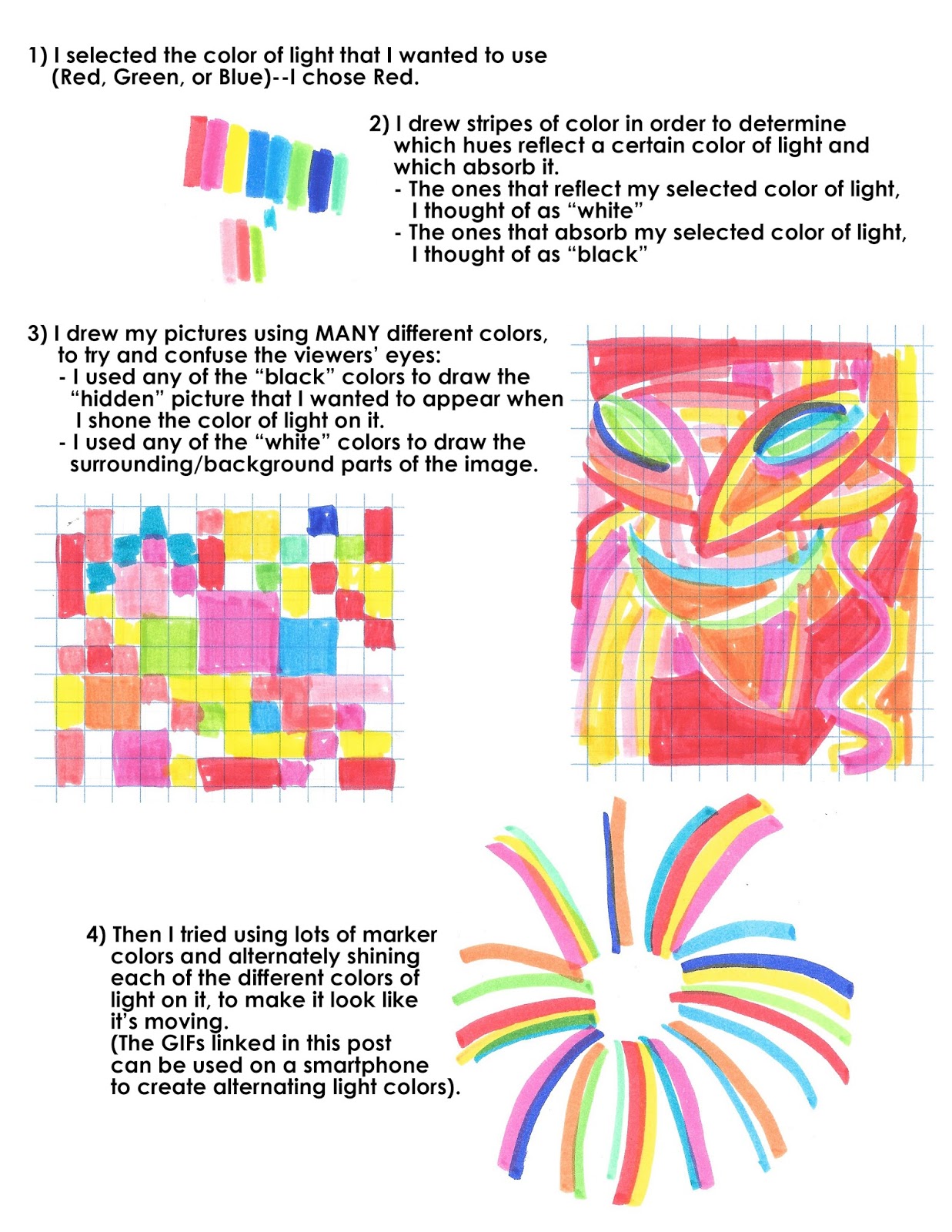In our last class, we are going to be learning about things that emit light or that change how they interact with light, and one of our activities will be making "thermochromic art." This means that we will be using a black paint that appears black when 'cool' and changes to clear when 'warm'.
I would like for the students to have the opportunity to consider what sort of image they'd like to use before class so that they will not feel pressured and can be happy with their product.
In order to explain what I'm talking about, below are some silly examples showing a 'cold' image and its corresponding 'warm' image, in which the colors underneath are revealed when the black pigment becomes clear.
Based on my experimentation, my recommendations are:
- Choose something simple
- Revealing a number of colors seems to be the most visually effective
- White paint or paper under the disappearing-black paint doesn't get covered as well or look as clear when revealed as vivid colors
- Maybe even sketch out what the image will look like when 'warm' (when the black has disappeared) and then draw it again showing the black that will appear when it is 'cold'












